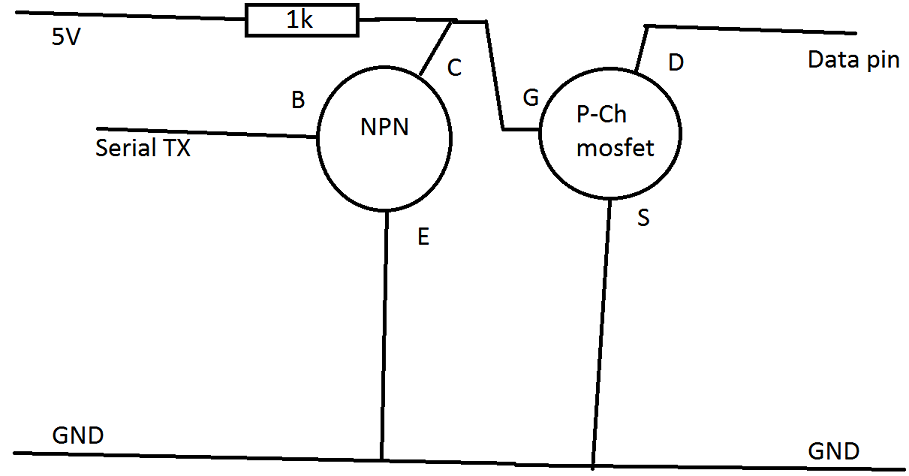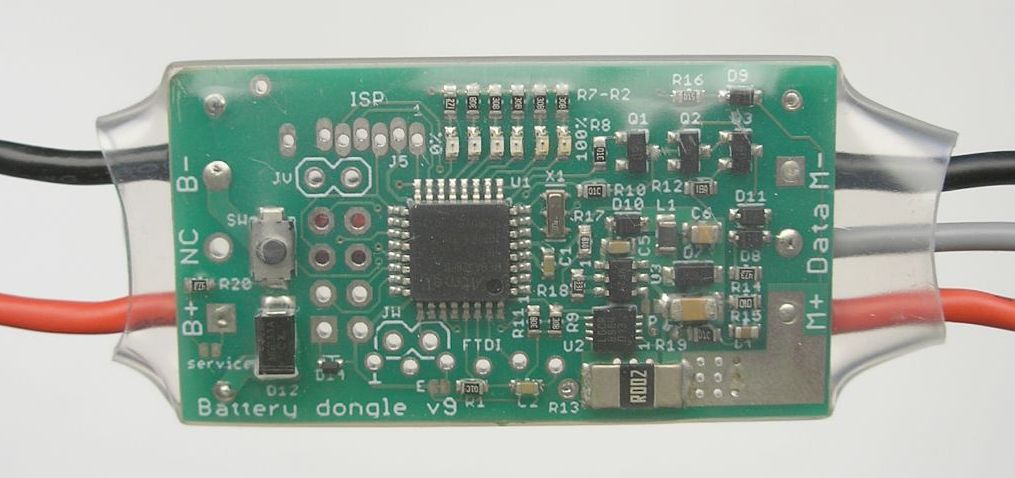Pwnlord187
10 W
- Joined
- Jul 27, 2016
- Messages
- 73
(the cells will still get balanced when charging, and still be protected from low voltage damage from the controllers operating range)
At what voltage does the yamaha and or bosch packs usually cut out at?Pwnlord187 said:If you bypass the discharge on your Yamaha battery pcb (cut the thick red/black wires going to the board from the discharge port, and solder them to the main leads of the pack, which are oval shaped solder pads on each end, the one closest to the port is positive) if you do this you won't be restricted by yamahas discharge limits, which are set to be overly conservative compared to how the cells can actually perform
gamerpaddy said:sorry for late post.
but i reverse engineered the yamaha battery a year ago.
in case you want to build your own.
Just get a Arduino compatible board and a few discrete components.
Add a 5V source, i usually use a LM2596HV dc dc converter for this. A USB powerbank or even running it from two or three Cells on the pack (VIN pin of the arduino) will work.
Optional: To monitor the voltage add a voltage divider set to a ratio of 7.401 (42v in 5v out) and connect it to the A0 pin of the Arduino.
Edit this code https://pastebin.com/34SdehGt
>Edit line 35 to match your voltage divider. calculate or test to find out ADC values.
>Change line 44 and 45 (the number 20) to a value you want. 20 means it averages the current voltage 20 times to smooth it out. 20 is 5 seconds.
>Remove line 50 if you dont want your indicator to stay at 10% even if its lower. this prevent turning the motor off when voltage drops driving up a hill.
After that, Flash it in Arduino IDE
Wire it up like this.

Some people including me allready did it to the haibikes, works great. See german pedelecforum.
If its too much for you, a guy called Cosas in pedelecforum is selling modules based off my code that does exactly this, basically dongles you put on the Battery connector and can connect any ordinary 36V Battery onto it.
Havent done anything on Bosch so far, i dont have Bosch.
int b1=255;
int b2=255;
int b3=14;
int b4=6;
int b5;//akku %
int b6=25;
int b7=1;
int b8; //??
int b9; //?? 2-3
int b10; // ?? 22-255
int b11=42;
int b12=248;
int b13=1;
int b14=24;
int b15=17;
int b16; //?? 192-224-240
int b17; // 0-7
int b18; // 0-255
int b19;
int b5t2 = 0;
int index = 0;
b5 = 100;
void setup(){
Serial.begin(2400,SERIAL_8E1);
}
void loop(){
int b5t = (int)map(analogRead(0),610,707,0,100); //610 = 33v, 707 = 38v
b5t2 = b5t2 + b5t;
index = index + 1;
if(index > 20){
b5 = (int)(b5t2 / 20);
b5t2 = 0;
index = 0;
}
if(b5 >= 100){ b5 = 100; }
if(b5 <= 5){ b5 = 5; }
//crc sum
b19 = ((b1-b2-b3-b4-b5-b6-b7-b8-b9-b10-b11-b12-b13-b14-b15-b16-b17-b18)%256)+256;
// 4 mal pro sek.
delay(250);
Serial.write(b1);
Serial.write(b2);
Serial.write(b3);
Serial.write(b4);
Serial.write(b5);
Serial.write(b6);
Serial.write(b7);
Serial.write(b8);
Serial.write(b9);
Serial.write(b10);
Serial.write(b11);
Serial.write(b12);
Serial.write(b13);
Serial.write(b14);
Serial.write(b15);
Serial.write(b16);
Serial.write(b17);
Serial.write(b18);
Serial.write(b19);
}Pwnlord187 said:If you bypass the discharge on your Yamaha battery pcb (cut the thick red/black wires going to the board from the discharge port, and solder them to the main leads of the pack, which are oval shaped solder pads on each end, the one closest to the port is positive) if you do this you won't be restricted by yamahas discharge limits, which are set to be overly conservative compared to how the cells can actually perform
flippy said:Pwnlord187 said:If you bypass the discharge on your Yamaha battery pcb (cut the thick red/black wires going to the board from the discharge port, and solder them to the main leads of the pack, which are oval shaped solder pads on each end, the one closest to the port is positive) if you do this you won't be restricted by yamahas discharge limits, which are set to be overly conservative compared to how the cells can actually perform
problem is that if any cell drops below 2.5V it bricks the bms.
i had a brand new open the other day for a paid analysis for several ebike batteries (frock those security torx T10 they have) and the bms is a TI bms chip running in host mode. as soon as it loses power or a major fault occurs it waits for a response from the host (who is at the factory) for action before it re-enables normal operation. its like having a smart bms without a reset button.
flippy said:At what voltage does the yamaha and or bosch packs usually cut out at?Pwnlord187 said:If you bypass the discharge on your Yamaha battery pcb (cut the thick red/black wires going to the board from the discharge port, and solder them to the main leads of the pack, which are oval shaped solder pads on each end, the one closest to the port is positive) if you do this you won't be restricted by yamahas discharge limits, which are set to be overly conservative compared to how the cells can actually perform



